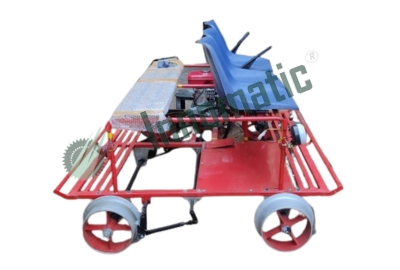Email Support
info@ir-pl.com Call Support
+91-9999-192-190 
Innomatic® Railway Inspection Trolley, also known as a track inspection car or a track inspection trolley, is a specialized vehicle used for the inspection and maintenance of railway tracks. These vehicles are designed to travel on railway tracks and allow personnel to inspect the condition of the tracks, identify any faults or defects, and ensure the overall safety and efficiency of the rail infrastructure.
Here are some key features and functions of a railway inspection trolley:
Track Inspection: The primary purpose of these trolleys is to inspect railway tracks thoroughly. They are equipped with various sensors, cameras, and measurement devices to detect deviations, wear and tear, or any anomalies that could affect train operations.
Personnel Transport: Inspection trolleys typically accommodate a small number of personnel who can easily access different parts of the track. This allows inspectors to stop at various points along the track to conduct detailed examinations.
Safety and Stability: These vehicles are designed to operate safely on railway tracks, with features such as sturdy wheels or bogies that ensure stability and adherence to track standards. They are built to withstand the stresses and conditions of railway environments.
Equipment and Tools: Inspection trolleys may carry specialized equipment and tools needed for minor repairs or adjustments that inspectors can perform on-site to ensure immediate safety or operational improvements.
Data Collection: Modern inspection trolleys are often equipped with data logging capabilities. They can record measurements and observations during inspections, which are then used for analysis, maintenance planning, and compliance reporting.
Versatility: Depending on the design, inspection trolleys can operate on different types of railway tracks, including straight sections, curves, and switches. Some models may also be capable of operating on electrified tracks.
Regulatory Compliance: Inspection trolleys play a crucial role in ensuring that railway tracks comply with safety and operational standards set by regulatory authorities. Regular inspections help prevent accidents and minimize downtime due to track failures.